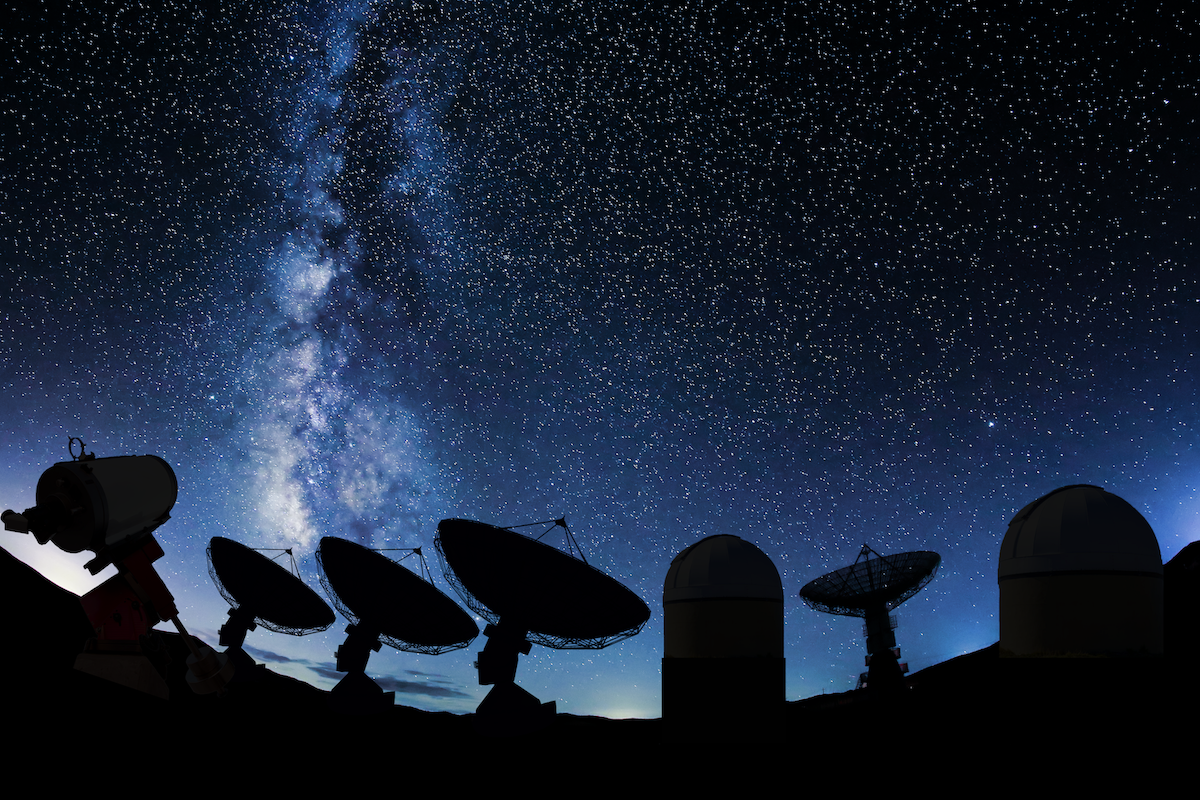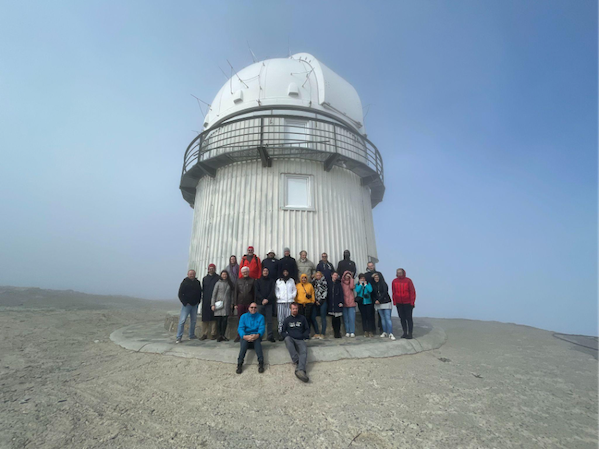
News from ORP
by Hélène Dworak (CNRS/LAM, France) and Jean-Gabriel Cuby (CNRS/LAM, France)

The OPTICON RadioNet Pilot (ORP), launched in March 2021, is one of the European Commission's new transnational access 'pilots' under Horizon Europe. This four-year project is the result of the merger of RadioNet and OPTICON, two well-established and successful programmes of the ground-based astronomy community that have received EC funding for over 20 years. It brings together 37 institutions, including funding agencies, observatories, institutions developing enhanced services and key technologies, and universities, in an effort to support and develop seamless access to radio and optical facilities.
The ORP mission is to facilitate astrophysical discoveries through a comprehensive set of research facilities by supporting a harmonised access procedure, unified data interfaces and improved services. It also aims to develop a new strategic framework for advancing European astronomy in the era of mega-installations such as ELT, SKA, CTA and the rapidly evolving field of multi-messenger and time domain astronomy, such as the identification of gravitational waves and neutrino events.
Providing Transnational and Virtual Access to observatories and nodes around the world is the main action of ORP. With over twenty telescopes and networks of telescopes, access to observing time is provided through competitive processes based on scientific-merit. ORP also provides a transnational and virtual access program dedicated to the on-sky testing of new instrumentation concepts and technologies needed for future astronomical instruments, for single telescopes and arrays of telescopes, including the VLTI.
For the fourteen optical and infrared telescopes and networks, it is a single Time Allocation Committee (TAC) that decides on the allocation. Since the project began, three committees have taken place (2021A, 2021B and 2022A) and have granted 504.6 nights to 55 PIs applications. A ratio between CEE and non-CEE countries is done to contribute to diversity.
For radio observation, ORP portfolio consists of arrays (EVN, e-MERLIN, NOEMA, and LOFAR), single dish telescopes (Effelsberg, IRAM PV, APEX, SRT) and European ARC nodes, each with its own Programme Committee (PC), as well as virtual access to archives of LOFAR and WSRT. Since March 2021, 4,785 hours of observation have been provided for 46 projects.
In parallel, ORP is leading the adoption of a set of common principles and tools to enable all scientists and researchers to have simplified and improved access to ORP facilities. At the first meeting on access to time domain, multi-facility and multi-frequency research facilities, preliminary discussion took place on the current status and expansion plans of Black Hole Tom (BHT) and the inclusion of the radio interferometry network in the BHT project. A report compiling the agreed standards and data model for the Pilot facilities should be published by the end of 2021.
Training courses and schools are also being organised for users in the radio and optical fields. Students will learn how to use the new harmonised access and analysis procedures, as well as how to increase their knowledge and expertise on astronomical infrastructures such as EVN, e-MERLIN, LOFAR, IRAM NOEMA, IRAM PV and ALMA. The 10th IRAM School on Millimetre Astronomy was held as a virtual edition on 15-19, 22 and 23 November 2021. The NEON Archival School Using ESO and ALMA Data also had a virtual edition on 19 - 26 June 2021.
In line with the former joint research activities of OPTICON, ORP continues to improve key infrastructure services through targeted technical developments. In this way, researchers will benefit from increased attention to their needs.

In 2021, the focus has been on the design and fabrication of new dispersion elements based on Volume Phase Holographic Gratings (VPHG) to improve the performance of optical spectrographs especially in small and medium-sized facilities in the European context. A call for proposals was launched in October 2021 and a feasibility study is underway on the proposals received. Projects are expected to start in early 2022.
Additionally, the First ORP Time-Domain Astronomy meeting 2021 took place on the occasion of the 12th GAIA Science Alerts Workshop, on 8-12 November 2021 in FORTH in Greece. The event brought together 80 scientists for a hybrid meeting on time-domain astronomy in optical and radio in the context of Gaia Science Alerts (see picture). This was the 12th meeting in the series, but the first where ORP is directly associated.
Finally, ORP coordinates efforts to preserve access to the sky for astronomical observations. In response to the external threats posed by mega-constellations of satellites, this policy-oriented forum brings together key stakeholders from different communities to share information on the impact and conduct advocacy. A working group was created and met several times to decide on an action plan and strategy. A joint policy could help provide support and coordination for activities within or beyond ORP.
Through the different components, ORP will examine and understand the basis for providing access for all current and potential facilities and infrastructures (including large-scale ESFRI facilities). As the ultimate goal of the project is to establish a pilot for transnational access provision, ORP will investigate the different mechanisms available to enable transnational access, while improving and maintaining open access.
The Pilot will involve all agencies, the whole community and the wider astronomical community. We will also try to link ORP with other pilots to exchange best practices and lessons learned, as well as to create common ground to ensure sustainability for all parties by integrating their needs and vision in the provision of transnational access.
For more information, please visit the ORP website, follow us on Twitter and subscribe to the ORP newsletter to be informed of its latest developments.